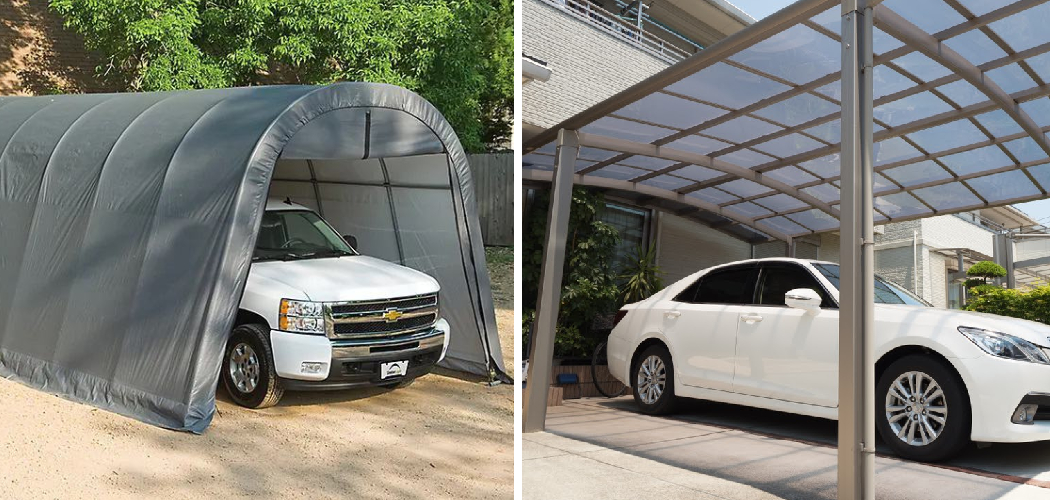Your car is a valuable asset, and protecting it from the elements is important. Unfortunately, not all of us have the luxury of a garage or other enclosed space to keep our vehicles safe.
But with careful planning and knowledge, you can still learn how to protect your car without a garage. Regular maintenance is one of the most important things you can do to protect your car without a garage.
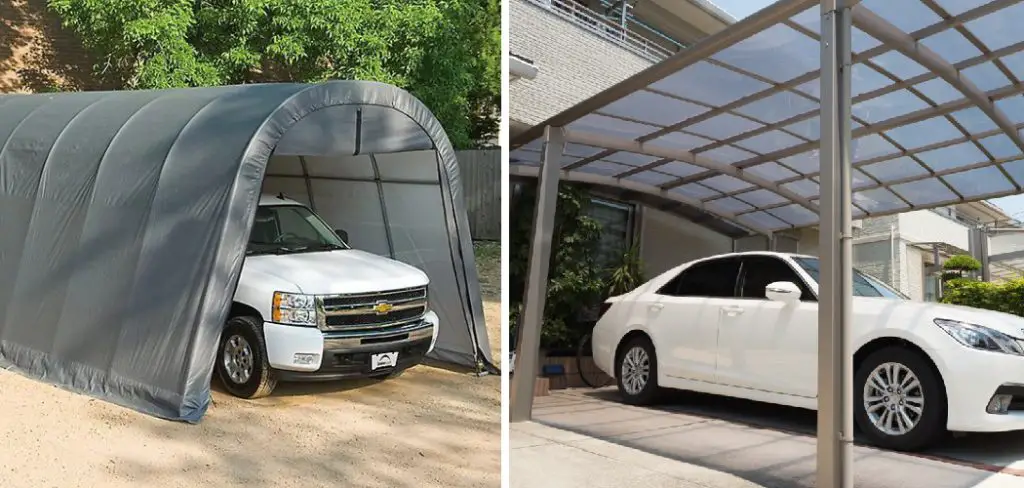
Regular services such as oil changes, tire rotations, and brake inspections help keep your car running at its best and extend the life of your vehicle. One of the primary advantages of not having a garage is that you can save money.
Not only do you avoid the initial cost of building or buying a garage, but you also don’t have to pay for any electricity or heating costs associated with keeping your car in a garage. You can find step-by-step instructions on how to protect car without garage in this blog article.
Materials You Will Need
- Car cover
- Sunshade
- Protective paint sealant
- Wax
- Automotive window tint
- Vehicle rust-proofing
- Tire pressure monitoring system
- Windshield wipers
- Wheel covers
- Parking sensors or cameras
Causes of Protecting Cars Without Garage
- Sun Damage: A major cause of car damage is the sun’s ultraviolet rays because they can make the paint fade, plastic and rubber parts brittle, and fabrics rot faster. To minimize this, you can use a car cover or wax your car regularly.
- Corrosion: The salt, dirt, and other chemicals in the air can corrode your car’s bodywork and other components over time. To protect against this, you can wash your car frequently with mild soap and water. You can also apply a protective coating to the affected area if necessary.
- Bird Droppings: Bird droppings contain acids that can corrode painted surfaces on your car’s exterior. To prevent this, you can use a car cover when your vehicle is parked outside for extended periods of time.
- Vandalism: If you live where vandalism is common, park your car in a well-lit area or keep it in a driveway or parking lot with good security. Investing in anti-theft devices, such as an alarm system or a steering wheel lock, is also a good idea.
- Hail Damage: Hail can cause dents and scratches on your car’s bodywork, especially if you don’t have a garage to keep it safe from the elements. To protect against this, you can use a special hail-resistant car cover designed to withstand up to 1″ in diameter hailstones.
- Temperature Extremes: Extreme temperatures can cause your car’s engine to overheat or freeze in the winter. To protect against this, use a quality antifreeze and check your coolant levels regularly. Keep an eye on the temperature gauge in your vehicle and park it in a shady spot if possible.

These are some of the causes of protecting your car without a garage. By following these steps, you can help ensure your vehicle is protected from the elements and maintain its value for years.
Importance of Protecting Car Without Garage
- Protects Against UV Rays: Unprotected exposure to the sun’s harmful UV rays can cause damage to your car’s interior and exterior, so protecting it from the sun is an important way to keep it looking great.
- Prevents Rust: Rust forms quickly in damp climates because moisture gets trapped in crevices between metal parts. A car cover helps protect against rust by keeping moisture out and allowing your car to dry faster.
- Keeps it Clean: Dust, dirt, pollen, bird droppings, tree sap, and other debris can all accumulate on the surface of your vehicle if you don’t have a garage. A car cover will help keep it clean.
- Discourages Theft: Car thieves are less likely to target a covered vehicle since it’s much more difficult to tell what kind of car is underneath the cover.
- Reduces Fading: The sun can cause paint to fade over time, so having a car cover in place will help keep your car looking newer for longer.
- Saves Money: Keeping your car protected from the elements can help reduce the cost of repairs and maintenance in the long run. Investing in a car cover is inexpensive to save money on costly repairs.
By investing in a quality car cover, you can protect your vehicle from damage caused by UV rays, rust, dirt, theft, fading, and other environmental hazards.
Step-by-Step Processes for How to Protect Car Without Garage
Step 1: Inspect Your Car
Inspect your car for any possible damage that could occur if exposed to weather and other environmental conditions. Make sure all windows are sealed tightly, and check the tires for any signs of wear. Regularly clean the interior and exterior of your car thoroughly to keep it looking nice and prevent the buildup of dirt, mold, mildew, and other debris that can damage the surface of your car.
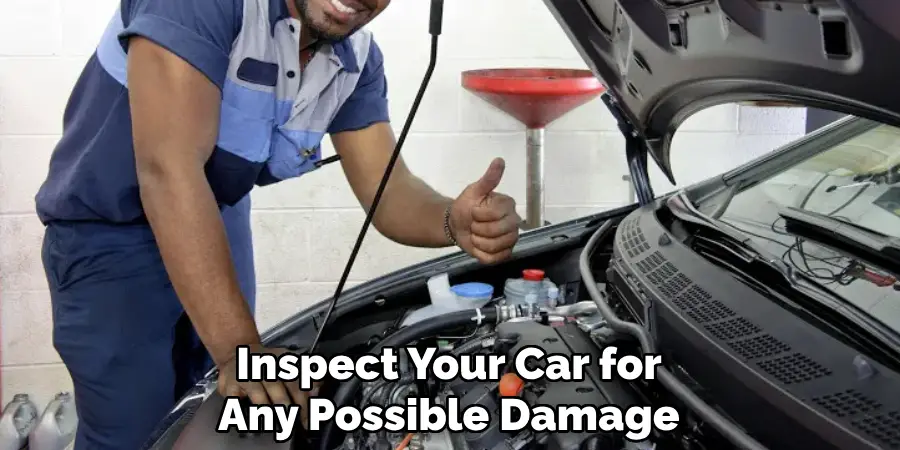
Step 2: Wax Your Car
Waxing your vehicle regularly helps protect it from sun damage, acid rain, and other elements. Choose a good quality wax to ensure maximum protection. Whenever possible, park your car in the shade or under an overhang that will protect it from direct sunlight.
Step 3: Install a Car Cover
Invest in good quality car covers to protect your vehicle when you’re not using it. This is especially important if you plan to keep the car outside for long periods of time. Trees and other objects can pose a threat to your car. Make sure you park in a safe location that is not near any potential hazards.
Step 4: Invest in an Anti-Theft System
Invest in an anti-theft system that will help deter thieves and protect your vehicle from theft and vandalism. If you store your car outside, invest in tire covers to protect your tires from the elements. Investing in a car shelter or carport can help provide added protection from wind, rain, and other environmental conditions.
Step 5: Keep an Eye on Your Vehicle at All Times
If you park outside without any form of protection, such as a car shelter cover, it’s important to periodically check on your vehicle and ensure it hasn’t been damaged. Regularly inspect the exterior for signs of damage and note any suspicious activity in the area.
By following these simple steps, you can help protect your vehicle from damage caused by weather conditions and other hazards when you don’t have access to a garage. Taking these precautions will also help ensure the safety of your vehicle and reduce the risks of theft or vandalism.
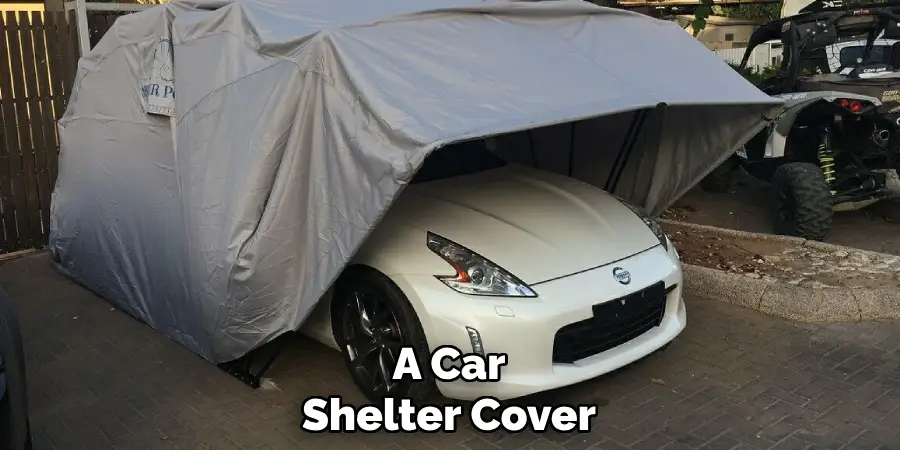
Precautions For how to Protect Car Without Garage
- Regular cleaning protects your car from dirt, debris, and bird droppings. Using a mild detergent that won’t strip away wax or polish finishes is important.
- Waxing your car regularly will help to protect its finish from fading and damage due to UV rays. Make sure to use a wax specifically made for vehicles and apply it in thin layers.
- Check your tires often for signs of wear and tear and air pressure. Properly inflating your tires helps prevent uneven tire wear and improves fuel efficiency.
- A car cover will protect your vehicle from the elements and keep it cooler in hot weather. Make sure to get a waterproof, breathable cover and one that fits properly on your vehicle.
- Always park in well-lit areas where many people are around to deter criminals. Parking in secure, gated areas is also ideal.
- Installing an alarm system is one of the most effective ways to deter thieves and vandals from targeting your vehicle. It will also alert you if someone does try to access your vehicle without permission.
- Several types of security systems on the market can help protect your car from theft and vandalism. These include motion sensors, GPS trackers, immobilizers, and cameras.
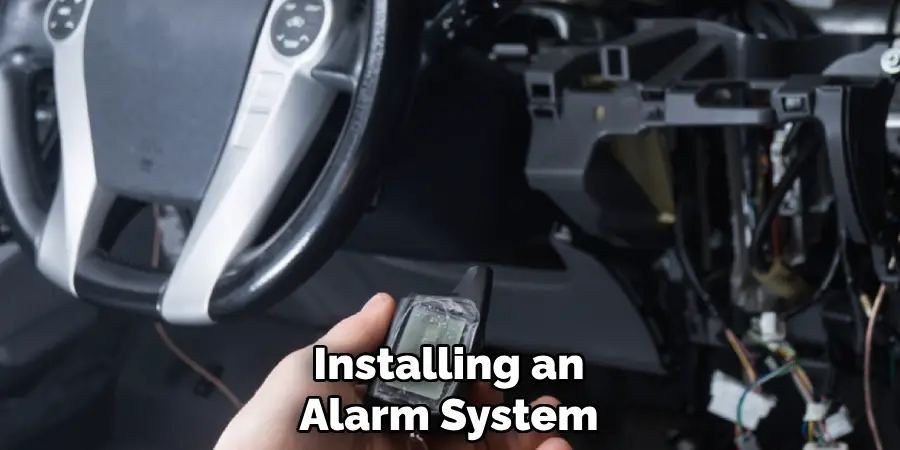
Using all these precautions, you can protect your car without a garage.
What Kind of Maintenance Should Be Done to Keep a Car Safe From the Elements?
If you don’t have a garage to protect your car from the elements, keeping the vehicle safe and in optimal condition can be challenging. However, with regular maintenance and upkeep, you can do much to ensure your car is well-protected. Here are some steps that should be done regularly:
- Clean Regularly: Make sure to clean the outside of your car often, as dirt, grime, and road salt can cause major damage if left unattended. A gentle car soap and water should be enough for a light wash. If you live in an area with harsh winters, make sure to wax your vehicle regularly to protect it from the snow and ice.
- Check Fluids: Check the oil, coolant, transmission fluid, and brake fluid levels regularly. This will help ensure your engine is running properly and can prevent major damage over time.
- Inspect Tires: Check your tires for proper air pressure and wear them often. Low air pressure or worn-down treads can decrease gas mileage and unsafe driving conditions. If you live in an area that gets a lot of snow, consider investing in snow tires for the winter months.
- Check Lights: Ensure all lights on your car are working properly, including headlights, brake lights, and turn signals. This is important for safety reasons, so you don’t get pulled over by the police due to a malfunctioning light or signal.

These are just a few steps to protect your car when you don’t have a garage for it. With regular maintenance and inspection, you can help ensure that your vehicle is safe and well-protected from the elements.
What Common Mistakes Drivers Make When Attempting to Protect Their Cars Without a Garage?
One of drivers’ most common mistakes when attempting to protect their cars without a garage is not properly cleaning and waxing the car’s body. Failing to keep your car’s exterior clean can lead to damage from dirt, mud, bird droppings, tree sap, or other debris that may accumulate on its surface.
Additionally, waxing your vehicle can help to create a protective barrier against the elements, making it more difficult for harsh weather conditions to cause damage.
Another common mistake is not regularly checking and maintaining the car’s fluids, filters, and other components that can become clogged or damaged over time. Neglecting these essential maintenance tasks can result in costly repairs down the road and reduced fuel efficiency.

It is also important to check the tire pressure and tread regularly, as low tire pressure can lead to uneven wear on the tires, which could result in a blowout or skidding. Finally, not properly securing your car with a cover when it sits outside for extended periods of time is another recurring mistake many drivers make when attempting to protect their cars without a garage.
Conclusion
In conclusion, owning access to a garage can be challenging, but keeping your car safe and in excellent condition is possible. Investing in a quality cover will protect your vehicle from inclement weather, debris, and UV rays while deterring theft.
Additionally, parking in well-lit areas with lots of foot traffic is essential for protecting your vehicle from burglars. Finally, regular maintenance will help preserve the condition of your car and extend its longevity.
With these tips in mind, you can easily protect your car without a garage, no matter the environment or climate. This article has been beneficial for learning how to protect car without garage. Make Sure the precautionary measures are followed chronologically.

